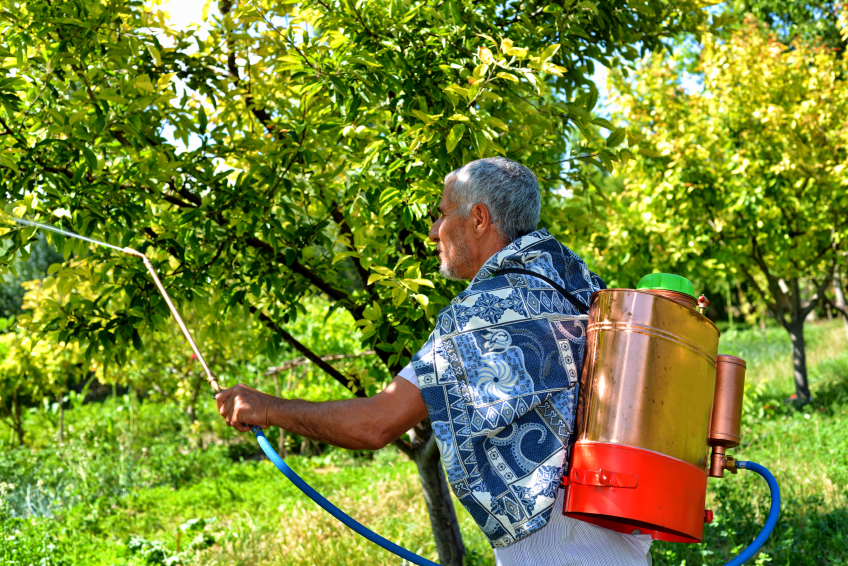Twenty-three states and the District of Columbia have legalized marijuana for medical use. Four of those states and D.C. have also legalized the recreational use of marijuana. A growing number of other states are considering legalization. So, how are pesticides being regulated in marijuana fields, and what are the protections for field workers from pesticides used to grow marijuana?

|
Since marijuana is illegal on the federal level, the U.S. Environmental Protection Agency (EPA) has not assessed the potential health hazards of any pesticides used to treat marijuana nor has it authorized the application of any pesticides specifically for use on marijuana. It is left to the states where cultivation of marijuana is legal to control pesticide use and to protect field workers.
However, in response to requests from some states where marijuana cultivation is legal, the EPA has released a letter indicating that the Agency will accept applications for Special Local Needs (SLN) Registration for pesticides used for marijuana production in those states.
What Are SLNs?
According to federal definition, an SLN is “an existing or imminent pest problem within a state for which the state lead agency, based upon satisfactory supporting information, has determined that an appropriate federally registered pesticide product is not sufficiently available.” Candidates for SLN registration include, but are not limited to: a new method or timing of application, a changed rate, new crop, new site, new pest, development of resistance in a pest, or need for a less hazardous formulation. The SLN permits distribution and use only in the registering state.
Forget expensive calls to lawyers and consultants. With Enviro.BLR.com, you get instant access, 24/7. Try it out today and get the 2015 EHS Salary Guide, absolutely free. Download Now.
SLN registrations must comply with the Federal Insecticide, Fungicide, and Rodenticide Act, which states, in part, that the registration of a pesticide can only be authorized on the finding that it will not lead to “unreasonable adverse effects to the environment.”
Based on this requirement, the EPA strongly encourages states to pursue SLN authorizations only where a federally registered pesticide is approved for uses similar to a manner in which the SLN pesticide will be used.
Similar Use Patterns
According to the EPA, a federally registered pesticide would be considered to have similar use patterns for which an SLN pesticide for marijuana would be used if the pesticide is approved for use:
- On food, in order to have a complete toxicity database to evaluate potential toxicity of exposure;
- On tobacco, in order to have a study to determine the breakdown products formed when a treated plant material is burned;
- By the same types of application methods, in order to determine exposure of workers who mix, load, and apply pesticides;
- On crops with agronomic characteristics similar to marijuana, in order to adequately protect workers reentering areas where the pesticide has been applied; and
- In the same type of structure (e.g., greenhouses, shade houses) or at the same type of site (e.g., outdoor dryland site) as the proposed SLN use to ensure that workers are adequately protected when applying the pesticide, that the environmental fate of the pesticide is adequately understood, and that appropriate measures are in place to protect nontargeted organisms and water resources.
Enviro.BLR.com puts everything you need at your fingertips, including practical RCRA, CAA, CWA, hazardous waste regulatory analysis and activity, news, and compliance tools. Try it at no cost or risk and get a FREE report.
The EPA also encourages states to consider pesticides for which the Agency’s risk assessments indicate that additional modest exposure will not approach a risk of concern for human health.
What If There Is Not a Similar Use?
EPA says if a state cannot identify a federally registered pesticide with uses similar to the proposed SLN use, then the state is expected to take responsibility for providing information and analysis to support the SLN registration for marijuana.
SLN Guidance
A few states have provided guidance for submitting requests for SLN registrations for pesticide use for marijuana. In some cases, the application must be signed by the registrant. In others, the SLN application may be submitted by a third party authorized by the registrant.
SLN applications must demonstrate that there is a special local need in the state by describing the particular pest problem, that the available pesticides allowed for marijuana are not adequate to control the problem, and whether the pest problem applies to indoor or outdoor cultivation or both.
Applications are usually required to submit letters of support from researchers or other experts and/or trade associations representing marijuana businesses.
Tomorrow, we will take a look at how two states, Colorado and Washington, where marijuana is legally grown for both medical and recreational use, are handling pesticide use and worker protection.

Would love to see a topic on how to protect workers from other workers who are high on marijuana, now that it is legal in some states. Drug-free workplace…right up until break and lunch time! Workers know that the employer can’t fire or discipline a bunch of them and still get product out the door. I saw this in Colorado where almost 1/3 of our workers who were injured on the job or were involved in an incident, tested hot for marijuana and other illegal drugs. Legalization of marijuana has made unsafe jobs and places to work, even more unsafe.